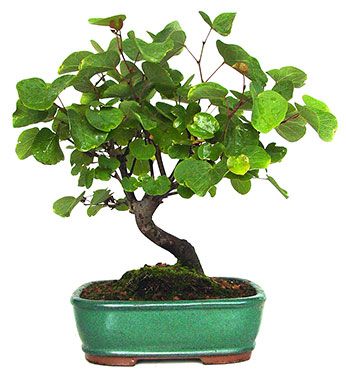Characteristics
Deciduous tree characteristically kidney-shaped. Flexible branches that at the end of winter turn into an intense pink mass of high viscosity. The fruit is a hanging legume, pedunculated with one of the winged edges. Irregular trunk, usually twisted, with black bark that cracks as it gets older. It can reach 10 meters high.
Location
Outside, although it must be protected from frost.
Watering
Abundant in summer and moderate in winter.
Fertilization
In spring and autumn.
Re-potting
Every 2 years, at the beginning of the spring sprouting.
Substrate
100% Akadama, or mixed with a 20% of volcanic gravel.
Pruning and pinching
Pruning
At the beginning of spring sprouting.
Pinching
When the branch has grown to 6 to 8 leaves, cut down to 2 leaves. The defoliation can be total or partial.
Wiring
Spring.
Curiosities
According to popular belief, Judas Iscariot hanged himself on a tree of love and that is why that tree has grown curved until today. The tree of love is perhaps the most beautiful of our trees when blooming.

